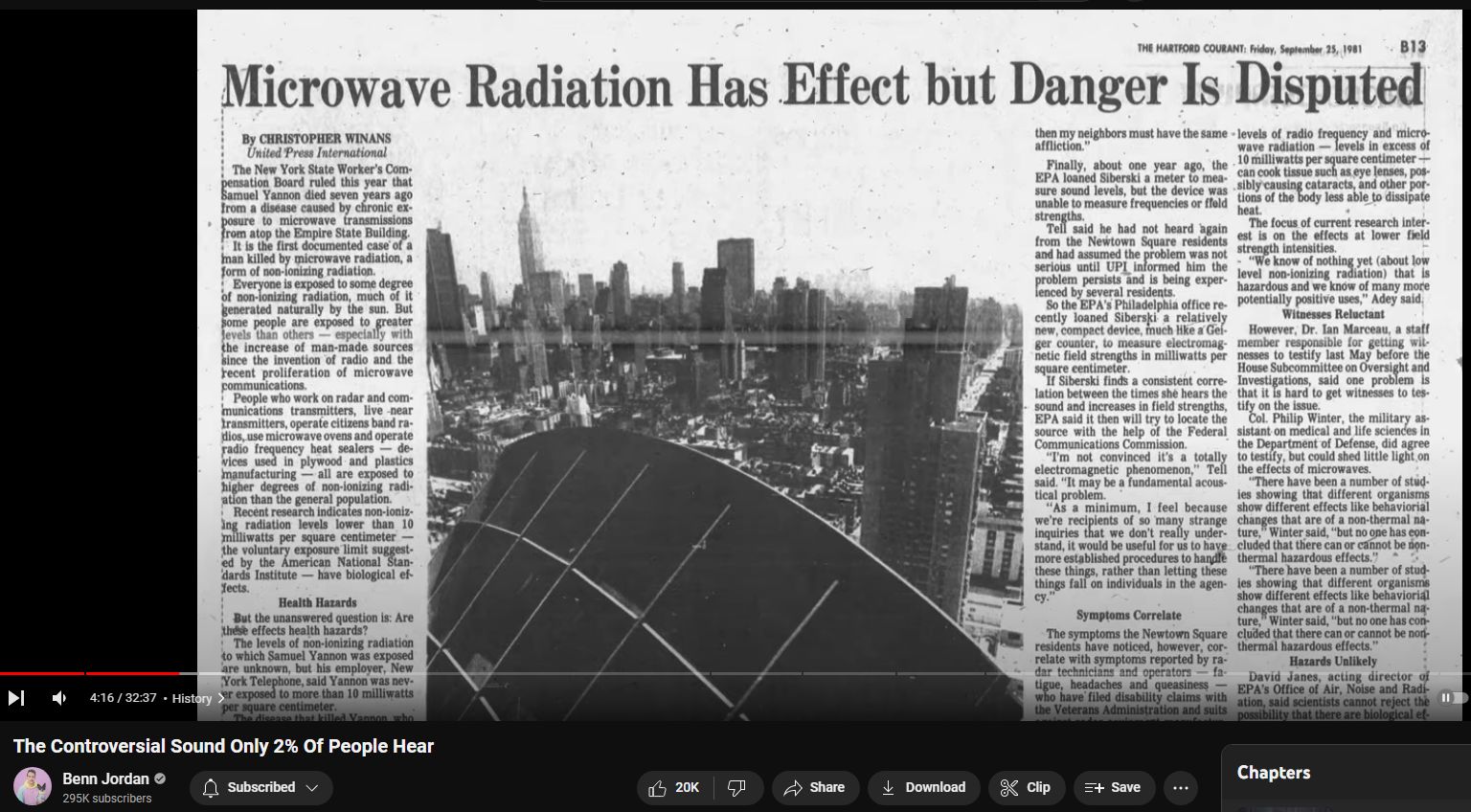Rijke Pressure, Taos Hum, Subsonica – The Controversial Sounds Only 2% Of People Hear
1st real trace / published information about persistent low-frequency environmental hum — 1973: Loudness and annoyance due to low-frequency sound, such as the Taos Hum or other similar phenomena, can have significant impacts on individuals and communities. Here’s how: 1. **Perceptual Effects**: Low-frequency sound waves can be perceived differently by individuals compared to higher-frequency sounds. … Read more
